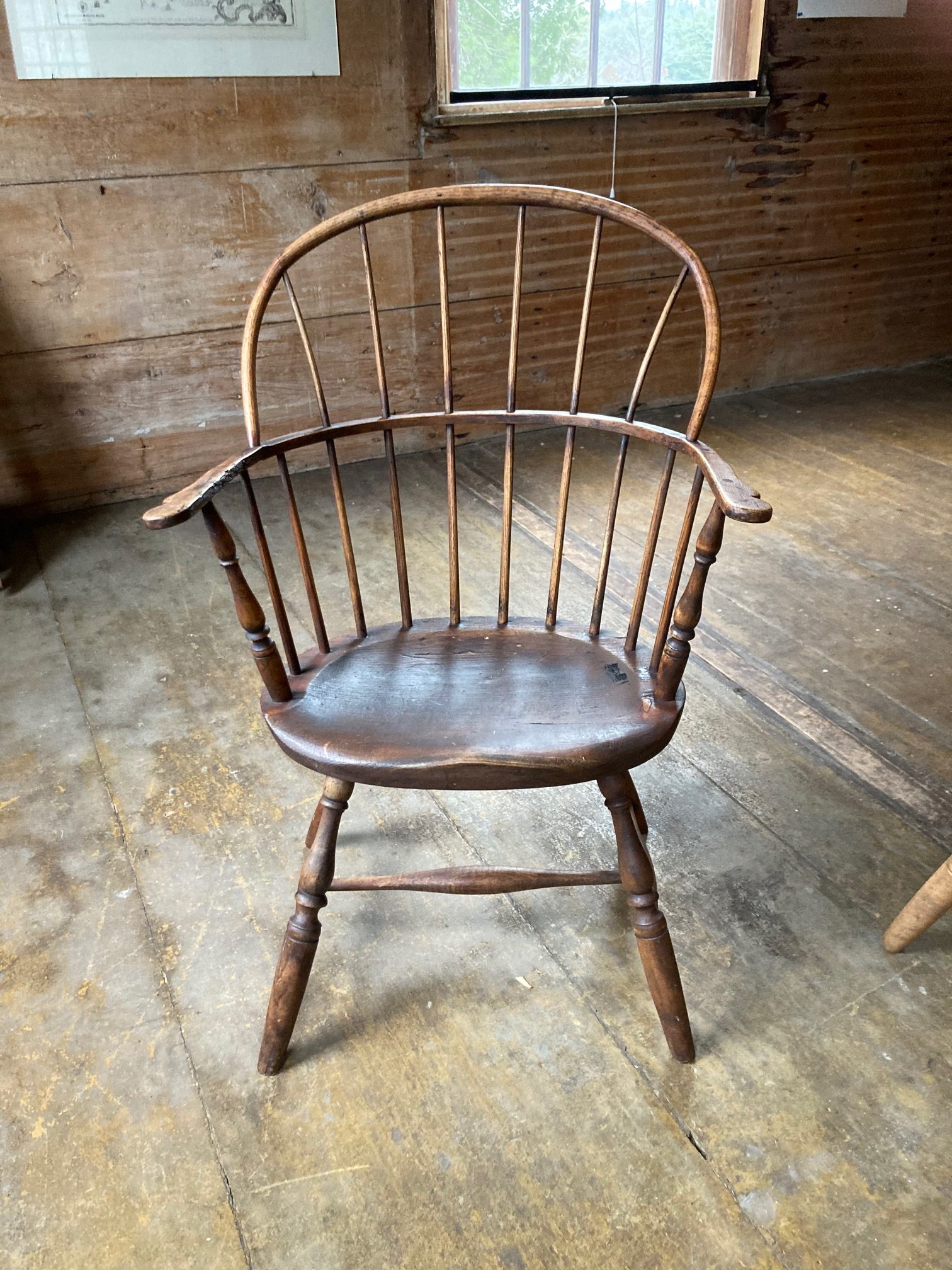Sack-Back Windsor Armchair
This style of Windsor chair was probably initially developed in Philadelphia during the second half of the 18th century but its popularity soon spread to the other British colonies in North America. Our example is a relatively simplified version but contains all the essential elements of this chair type.

It has a characteristic shaped pine saddle seat designed for comfort. It is supported by turned legs (usually made of maple) connected by stretchers below for added strength. A single curved piece of wood placed about 14 to 16 inches above the seat forms a half-circle hoop supported at each front end by turned arm posts. It flairs slightly at each end to form hand grips. The spindles comprising the back run through this piece of wood and extend up into a second half circle piece of bent wood which holds the spindles in place and which forms the upper section of the chair back. This arched piece of wood is doweled into the horizontal hoop to lock it into place. The bent wood components and the spindles were usually made of ash which is both incredibly strong but also elastic. The standard designs, interchangeable parts, and streamlined construction of the Windsor chair represent an important step towards the industrial production of furniture.
This sack-back chair design is practical, efficient, and surprisingly durable. Such chairs were made in enormous numbers throughout the English colonies and served multitudinous purposes. It is probably safe to assert that they were amazingly comfortable given the fact that, with few exceptions, they were unupholstered. Exceptionally a few did have upholstered leather added to the pine seat. The sack-back Windsor chair provided inexpensive, rugged, and comfortable seating for the home and for public spaces such as taverns, courthouses and other assembly rooms.
George Keyes, LCHA Collections Committee

 Newsletter
Newsletter Join LCHA
Join LCHA Donate Now
Donate Now